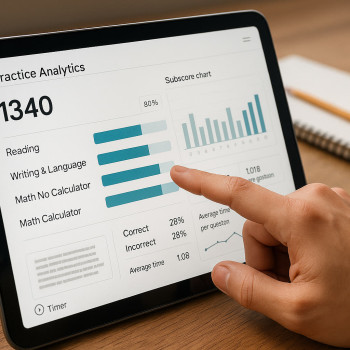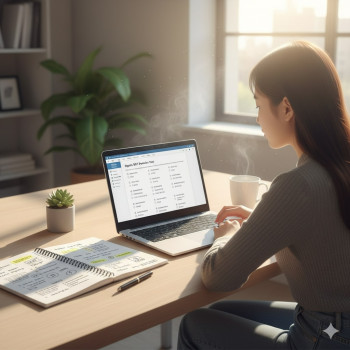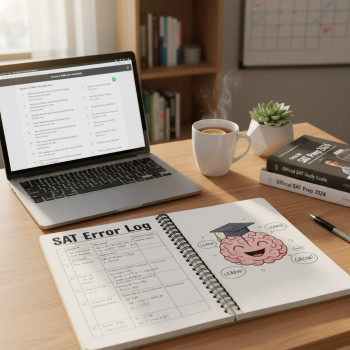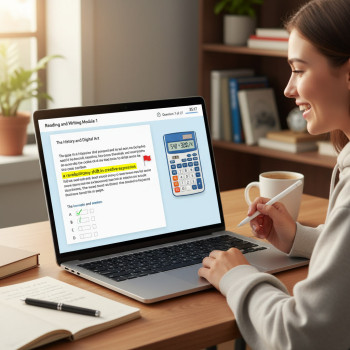Understanding UVA’s Approach to SAT Scores: The Big Picture
If you’re applying to the University of Virginia (UVA), you and your family probably have a handful of questions bouncing around: Does UVA require SAT scores? What score should I aim for? Will a strong SAT make up for a weaker GPA? The short answer: UVA is highly selective and values well-rounded applicants. How they treat SAT scores can change over time, but a clear pattern emerges from the most recent admissions snapshots: test scores can strengthen an application, and competitive scores often fall in a clear range that gives you a practical target.

What “test optional” or “test considered” actually means
Many top public and private universities—including UVA at various points—have adjusted how they use standardized tests. You’ll see phrasing like “SAT/ACT considered if submitted” or “test optional.” Practically, this means:
- If you submit SAT scores, the admissions committee will consider them alongside GPA, coursework, essays, activities, and recommendations.
- If you don’t submit scores, the admissions office will place greater emphasis on other parts of your application—especially grades, course rigor, and qualitative elements like essays and recommendations.
- Submitting a score that strengthens your profile—because it is at or above the typical range for admitted students—can help. Conversely, a low score that’s far below the typical range usually won’t provide benefit, and in some cases could raise questions.
What scores should you aim for? UVA’s practical SAT targets
UVA is a selective university, and the middle 50% SAT range for admitted students gives a useful benchmark. Think of this range as a practical goal zone: being inside it signals you’re scoring similarly to many admitted applicants; exceeding it gives you an edge.
For students planning their Digital SAT timeline, aim to reach at least the lower bound of the middle 50% range—and ideally get into or above the upper bound if you want to be comfortably competitive. For scholarship considerations or majors with intense competition (like engineering or economics), higher scores can help.
Typical SAT ranges and what they mean for you
| Measure | Practical Target | How to Interpret |
|---|---|---|
| Middle 50% SAT Range | Approximately 1410–1520 | Be inside to be competitive; above to strengthen your candidacy. |
| Competitive Benchmark | 1520+ | Helps in highly competitive majors and for merit consideration. |
| Safe Minimum | 1400 (approx.) | At or below this, emphasize other strengths—APs, essays, leadership. |
These figures are practical targets rather than strict cutoffs. Admissions is holistic: two students with similar scores can have very different outcomes because of course rigor, essays, teacher recommendations, extracurriculars, demonstrated interest, and personal background.
Should you submit SAT scores to UVA?
This is a strategic question—one that every student and family should answer with an honest look at strengths across the whole application.
When you should definitely submit scores
- Your SAT falls comfortably within or above the middle 50% range for UVA. A strong score can help you stand out.
- You’re applying to majors or scholarships where standardized scores are commonly used in review or where objective measures help clarify academic readiness.
- Your GPA or school profile is from a small or lesser-known high school where a standardized score provides a consistent benchmark.
When you might skip submitting scores
- Your score is significantly below the middle 50% range and you have stronger parts of your application to showcase (e.g., stellar grades in AP/IB courses, exceptional essays, notable research or leadership accomplishments).
- Submitting scores won’t add new information; for example, if you’ve already demonstrated academic excellence through other objective measures.
Remember: the decision to submit is personal and strategic, and you can consult counselors or a trusted tutor to weigh the choice. Personalized help—like Sparkl’s 1-on-1 guidance and tailored study plans—can also help you decide whether your current score strengthens your UVA application or whether a focused test-prep sprint could meaningfully boost it.

How admissions readers see the SAT within the whole application
At highly selective publics, admissions officers aim to build classes that will thrive academically and contribute to the campus community. SAT scores provide a snapshot of readiness, but they are one of many snapshots. Here’s how different parts of your application interplay with your SAT:
- High school transcript: Often the heaviest weight. Rigor (AP/IB/Honors) + grades = primary academic indicator.
- Essays and personal statements: Reveal voice, perspective, and fit—critical for holistic review.
- Recommendations: Add context and characterization—how teachers see you in the classroom.
- Activities and leadership: Show sustained contribution and potential for campus impact.
- SAT/ACT: An additional objective data point. Strong scores can confirm readiness; weaker scores can be offset by other strong evidence.
Study plan: How to prepare for the Digital SAT with UVA in mind
Preparing for the Digital SAT is both an academic and psychological plan. You need content mastery, strategy, and confidence. Here’s an actionable preparation roadmap that balances realistic timing with high-impact practices.
Six-month plan for steady improvement
- Months 1–2: Diagnostic + foundation
- Take a full-length official Digital SAT practice test to get a baseline.
- Identify high-leverage content gaps (algebra, grammar, data interpretation).
- Create a weekly schedule with 4–6 hours of focused study, including content review and short practice sets.
- Months 3–4: Strategy + timing
- Practice sections under timed conditions; work on pacing and question selection.
- Learn the digital tools: command of on-screen calculator, mark-for-review, and navigation shortcuts.
- Months 5–6: Peak practice + test simulations
- Take 3–4 full practice tests, mimicking test-day conditions.
- Refine weak areas and practice question groups you still miss.
- In the final two weeks, taper to avoid burnout—short, focused sessions and relaxation strategies.
High-impact tactics that move the needle
- Active review: after each practice test, classify missed questions by reason—content, careless error, timing, or misread—and target the largest categories.
- Short, daily practice: 20–40 minutes every day beats cramming.
- Data-driven practice: keep a simple tracker (topic, error type, time spent, improvement) and adjust your plan weekly.
- One-on-one coaching: targeted tutoring (for example, Sparkl’s personalized tutoring) can provide tailored drills, help you correct persistent errors, and model effective test strategies—especially useful in the last 8–12 weeks.
Sample timeline for seniors applying to UVA
Application deadlines and test dates are crucial. Build backward from UVA’s application deadline (commonly around early January for Regular Decision and earlier for Early Action/Decision rounds) so you have clear checkpoints for testing, essays, and recommendations.
| Month (Senior Year) | Focus | Suggested Actions |
|---|---|---|
| August–September | Plan & initial testing | Take a diagnostic Digital SAT; start drafts of college essays; list recommenders. |
| October–November | Peak prep & Early applications | Take official Digital SAT; finalize Early Action/Decision applications if applying early. |
| December | Final tests & application polishing | Optional final Digital SAT attempt; polish essays and finalize recommenders. |
| January | Regular decision due | Submit applications; ensure all test scores (if sending) and transcripts are sent. |
Crafting a competitive profile beyond the SAT
A strong application to UVA is multi-dimensional. If your SAT is on the lower side, double down in areas where you can show growth or excellence.
Academic rigor and GPA
Admissions officers pay close attention to the courses you chose. If your transcript shows that you consistently selected the most rigorous classes your school offers, that demonstrates academic courage and curiosity—two qualities UVA values highly.
Essays and voice
Your essays are where you bring personality, reflection, and narrative. Use them to show how you think, what you value, and how you will contribute to the UVA community. Admissions officers read tens of thousands of essays—authenticity and clarity stand out much more than flash.
Extracurriculars with depth
Admissions isn’t just a checklist of activities. Depth matters: sustained leadership, meaningful projects, or creative work that shows initiative can be decisive.
Realistic scenarios and advice: examples that illuminate
Here are three short, realistic profiles and how SAT strategy might differ between them.
- Case A — The Riser: 3.9 GPA with heavy AP load, SAT = 1480. Submit scores. The SAT confirms the academic story and adds clarity for scholarship committees.
- Case B — The Portfolio Student: 3.6 GPA, SAT = 1320, but national awards in art and community leadership. Consider skipping scores and emphasizing portfolio and essays—unless you can reasonably improve the SAT within your timeline.
- Case C — The Late Bloomer: 3.7 GPA with an upward trend, SAT = 1400 but practiced heavily for a retake. If you can push the score into the 1500s with focused prep, submit the improved score to strengthen the application.
How personalized tutoring (and tools) help—where Sparkl fits in
Every student’s pathway is different. The choice to invest in personalized tutoring pays off most when the tutoring is targeted: addressing persistent weaknesses, building testing stamina, and refining strategies. Services like Sparkl offer one-on-one guidance, tailored study plans, and expert tutors who translate diagnostic results into focused study blocks. They also harness AI-driven insights to show patterns in your practice tests so you spend time where it matters most.
Used judiciously, tutoring can speed progress, reduce stress, and help you make an informed decision about whether to submit scores to UVA.
Test Day and Beyond: practical tips that calm nerves
- Simulate test conditions during practice so test day feels familiar.
- Arrive rested and with a simple checklist: admission ticket, ID, approved calculator (if allowed), snacks for after the test, and a confident but calm mindset.
- Remember that one test is not your whole story. If it goes poorly, you usually have retake options or the ability to emphasize other application strengths.
Final checklist before you submit to UVA
- Have you confirmed UVA’s current testing policy and deadlines for the cycle you’re applying to?
- If submitting SAT scores, have you sent official score reports and double-checked they were received?
- Did you ask recommenders early and provide them with a brief list of activities and accomplishments to help them write specific letters?
- Have you had at least two people review your essays for clarity, voice, and grammar?
- Are your activities described with impact (what you did, how long, and what changed)?
Parting advice: strategy over panic
Applying to UVA—or any top public university—feels like a high-stakes sprint, but treating it as a strategic season changes the experience. Diagnose honestly, prioritize high-leverage work, and ask for help when needed. For many students, a combination of consistent self-study, realistic practice tests, and periodic one-on-one coaching (especially in the final months) hits the sweet spot.
Whether you’re deciding to submit scores or planning one last test push, keep perspective: colleges look for students who will contribute academically and personally to the community. Demonstrate readiness through a strong transcript, thoughtful essays, and, when appropriate, a competitive SAT score. And if you want tailored help to sharpen your study plan or target specific score gains, consider personalized tutoring options like Sparkl—used thoughtfully, they can provide structure, expert feedback, and the confidence boost many students need to perform their best.
Ready to start? A simple first step
Take one official full-length Digital SAT practice test under timed conditions. Use the results to build a 6–12 week study plan. If you’re unsure how to interpret your diagnostic or how many weeks you need to be test-ready, a short consultation with a qualified tutor can convert confusion into clarity—and a realistic timeline. Good luck—and remember: measured, consistent work beats last-minute panic every time.














No Comments
Leave a comment Cancel